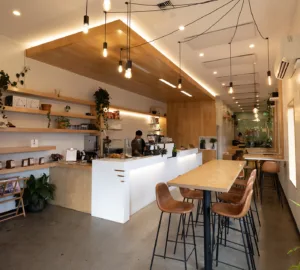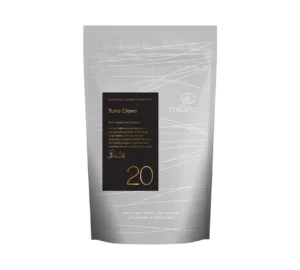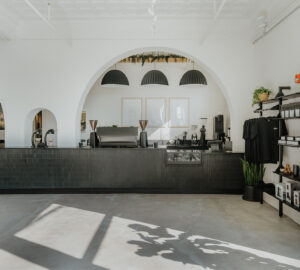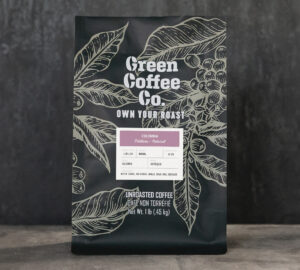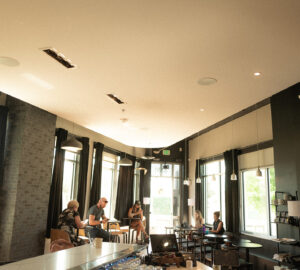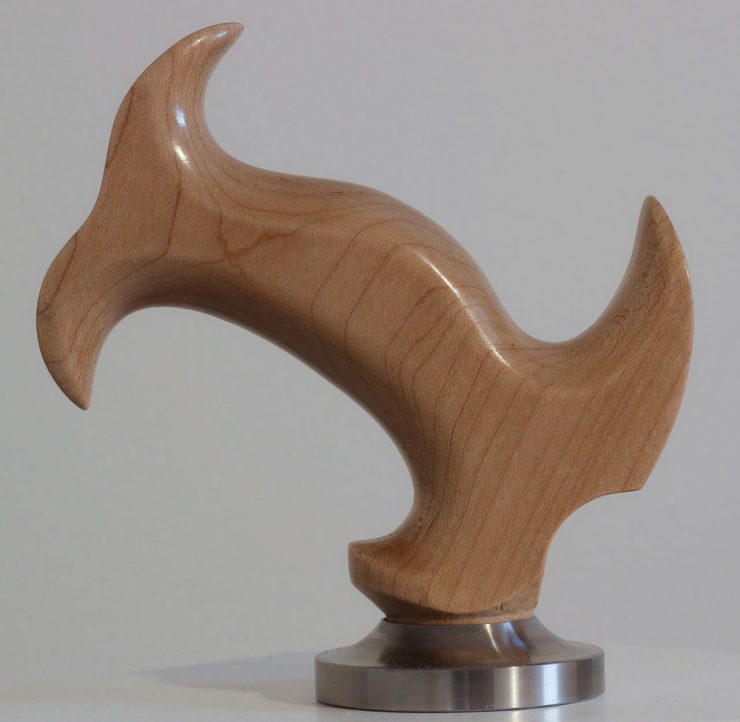
On April 12th, as Canadian champion Ben Put was finishing his set in the final round of the World Barista Championship, a small, geeky corner of the internet lit up with congratulations—and questions. What the hell was going on with his tamper?
A tamper is a hand tool used to compress ground coffee in a filter basket before pulling a shot of espresso. Usually, a flat metal base is attached to a cylindrical handle. The barista fits the base into the basket full of grounds and pushes down. Ben Put, however, competed with a custom tamper designed and built by his brother, Tim Put. Coffee competition fans watching in Seattle and around the world wanted to know why Ben Put’s tamper looked more like a pistol or a dolphin than the familiar knob.
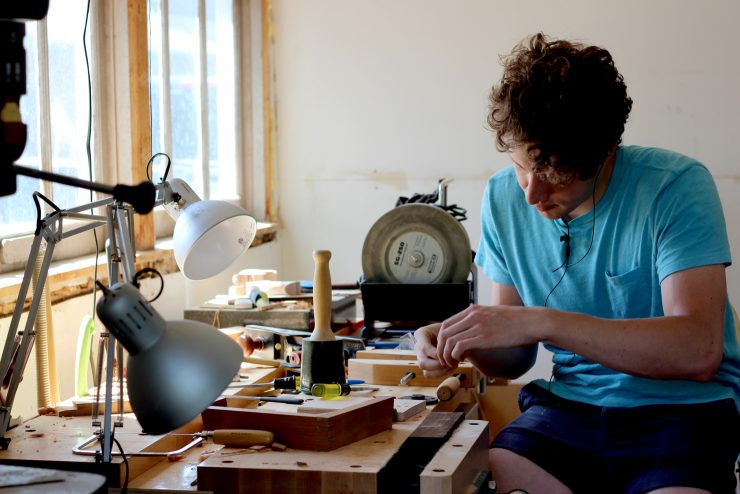
Like his brother Ben, Tim Put—who, it should be disclosed, I know personally as well as professionally—has worked as a barista for years. During his time behind the bar, he’s experienced his share of hand and wrist pain caused by the repetitive injuries that are familiar to so many in the industry. An eight-hour shift pulling shot after shot of espresso takes its toll, especially in a cafe committed to both speed and quality of service. Tim Put became interested in improving the experience of working behind the bar, both for himself and for his coworkers.
A woodworker, he was inspired by the types of ergonomic solutions that had already been perfected within that tradition. When I asked him to elaborate, Tim Put explained that hand tools, such as the planes and saws he uses, tend to incorporate practical and elegant design because, “the people who use tools are also the people who make tools.” Perhaps it’s no surprise, then, that Tim Put’s first tamper prototypes were based on handsaw handles.
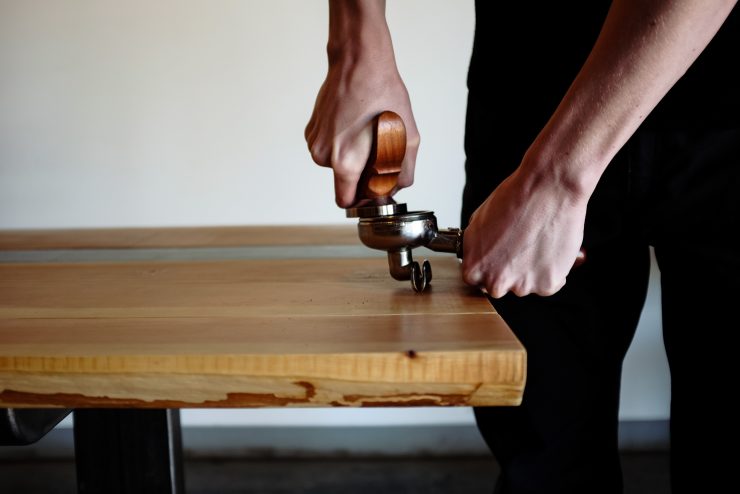
Put spent four years building prototypes and two years testing these prototypes in Edmonton cafes. He tweaked the fancy handsaw shape, but didn’t fundamentally alter his original design. After trying out different materials, he began using maple wood, which stood up to the hard knocks of cafe use. He also developed three sizes to accommodate different hands.
When Ben Put approached his brother about making a tamper for competition, he asked if he could build him a handle with the same ergonomic advantages, but a more modern, streamlined aesthetic. Tim Put experimented with a few new designs, eventually settling on one that omitted the flourishes of the traditional handsaw handle but maintained its fit in the barista’s hand. The Canadian champ took to it immediately. He not only practiced and competed with the tamper himself, he sees advantages for its use by baristas at all levels.
“I have spent most of my time in coffee as a barista trainer,” Ben Put tells me. “One of the most important parts of training is teaching baristas techniques that prevent long-term injury. Tamping is a high-risk motion—tamping without a straight wrist can injure the wrist and tamping too hard puts a lot of unnecessary strain on baristas’ bodies—and I know many baristas that have permanent damage from improper tamping over many years working bar.”
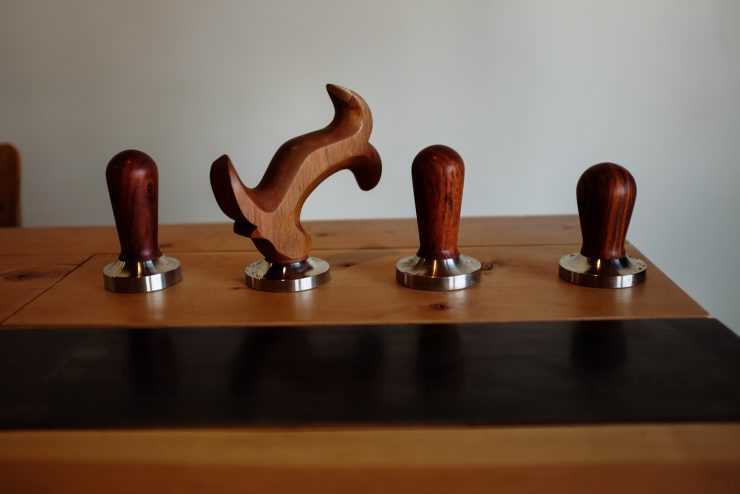
Baristas are commonly told that, to pull a perfect shot, they should be putting approximately thirty pounds of pressure into their tamp. The potential ergonomic advantage of Tim Put’s tampers allows a barista to exert that pressure with a straight wrist, rather than a wrist crooked around a straight handle. The curved shape of the Put tamper design strives to make correct wrist alignment automatic and intuitive—and also much more comfortable. In Tim Put’s words, “It’s a handle, not a spike. You really don’t want to push down with thirty pounds of pressure on a spike.”
Both brothers think that Tim Put’s anti-spike tamper may be easier for beginners to master than a standard coffee tamper. When I asked Ben about training with the tamper he said, “If you’ve ever handed a tamper to a new barista and watched them work with it, it is readily apparent that the traditional handle design is not intuitive. Tim’s handle is much more intuitive for new baristas and it is really easy to switch over for more seasoned baristas.”
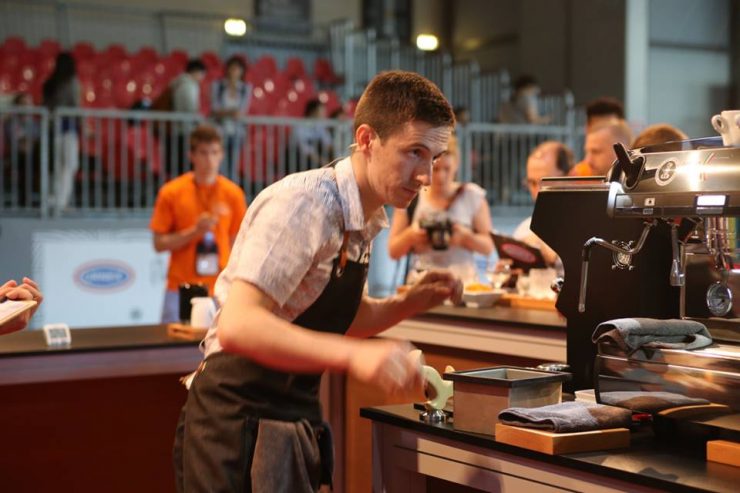
Ben Put also noted the effect the custom tamper had on his own performance, both in and outside of competition: “I find it very easy to have a level tamp because I don’t have to worry about keeping my wrist straight and tamping level. All I need to think about is tamping level.” Greater comfort and ease when tamping results in consistently better coffee, but Tim emphasizes that his design hack was aimed at improving a barista’s quality of experience, not just improving a customer’s product.
Currently, Tim Put makes his tampers to order, carving them by hand in his home workshop. Esencia Tampers, an Edmonton company, supplies 58-millimeter bases for the handles, which can also be used with other bases. Tim has adopted the modern shape he created for his brother as his de facto design. Tampers are available for purchase through Tim Put’s official website.
Lizzie Derksen is a writer, zine publisher, and coffee professional living in Edmonton, Alberta. This is her first feature for Sprudge.com.
















